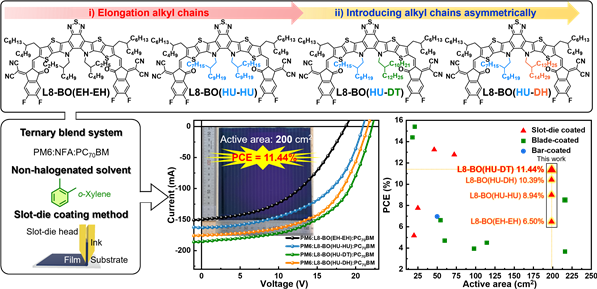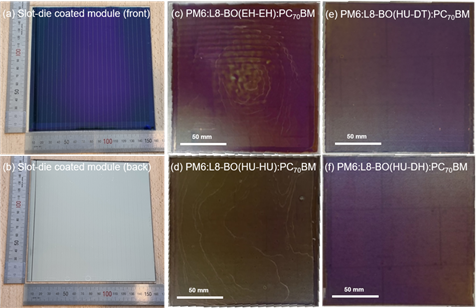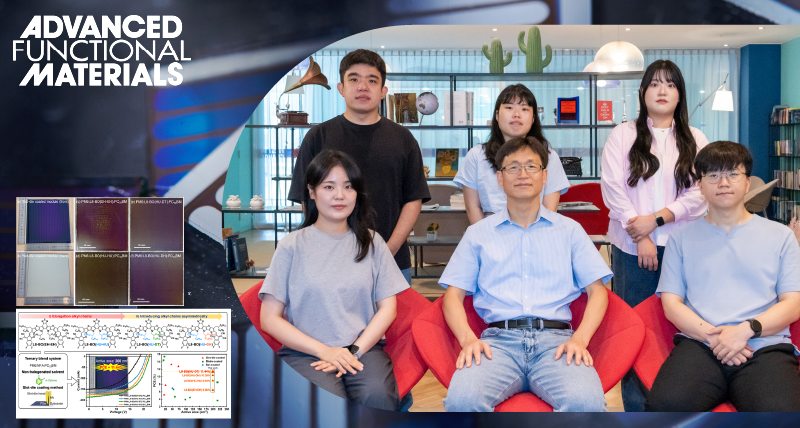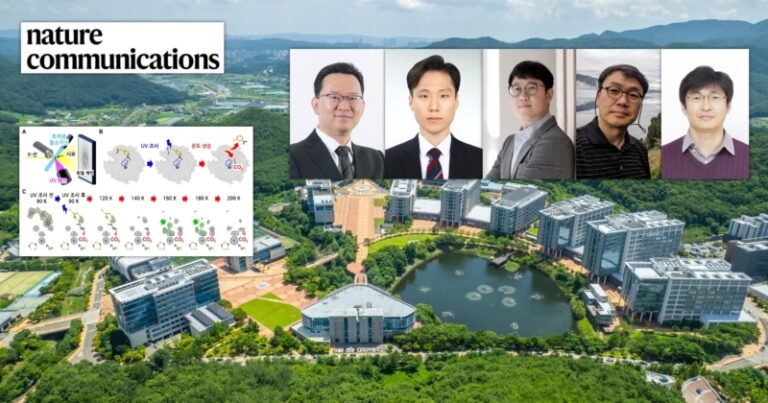With the drive toward the development of large-area organic solar cells (OSCs), researchers have achieved a remarkable power conversion efficiency (PCE) of 11.44% through the successful fabrication of organic solar modules with an active area of 200 cm2 using non-halogenated solvents. This milestone is poised to enhance the prospects for the widespread adoption of organic solar technologies.
The breakthrough comes from a joint research team, led by Professor Bong Soo Kim in the Department of Chemistry at UNIST, Senior Researcher Hongkyu Kang from the Research Institute for Solar and Sustainable Energies at GIST, and Professor Kwanghee Lee from the School of Materials Science and Engineering at GIST. They have successfully improved the uniformity of the photoactive layer films by asymmetrically elongating the alkyl chains of non-fullerene acceptors (NFAs), facilitating the development of highly efficient large-area organic solar cells (OSCs).

Traditionally, the fabrication of the active layer in OSCs relied on halogenated solvents, such as chlorobenzene, which pose substantial environmental and health risks, complicating mass-production efforts. Conversely, the use of low-toxicity, non-halogenated solvents had resulted in decreased film uniformity due to the clumping phenomenon of NFAs in the photoactive layer, ultimately reducing the efficiency of large-area organic solar cells.
To address this challenge, the research team employed a method of asymmetrically expanding the alkyl chains of NFAs, which significantly enhanced their solubility in non-halogenated solvents. This improvement led to a marked reduction in aggregation and enabled the formation of a uniform photoactive layer film over a substantial area of 200 cm².

Notably, the PM6:L8-BO(HU-DT):PC70BM-based photoactive layer of the 200 cm² organic solar cells exhibited minimal clumping and high material miscibility, achieving the highest efficiency recorded at 11.44%.
Furthermore, the slot-die coating technique utilized in this process is particularly well-suited for mass production through a roll-to-roll method, further bolstering the potential for commercializing next-generation organic solar cells.
Professor Kim Bong-soo stated, “We successfully suppressed the aggregation phenomenon in the photoactive layer by asymmetrically expanding the alkyl chains of NFAs. This will significantly contribute to the development of materials essential for the commercialization of organic solar cells.”
The study was supported by the National Research Foundation of Korea (NRF), with Bomi Kim from UNIST, DuHyeon Um from UNIST, and Yang-Soo Lee from GIST serving as lead authors. The findings were published in the online edition of Advanced Functional Materials on July 18, 2024.
Journal Reference
Bomi Kim, Yang-Soo Lee, DuHyeon Um, et al., “Asymmetrical Elongation of Branched Alkyl Chains in Non-Fullerene Acceptors for Large-Area Organic Solar Modules,” Adv. Funct. Mater., (2024).



